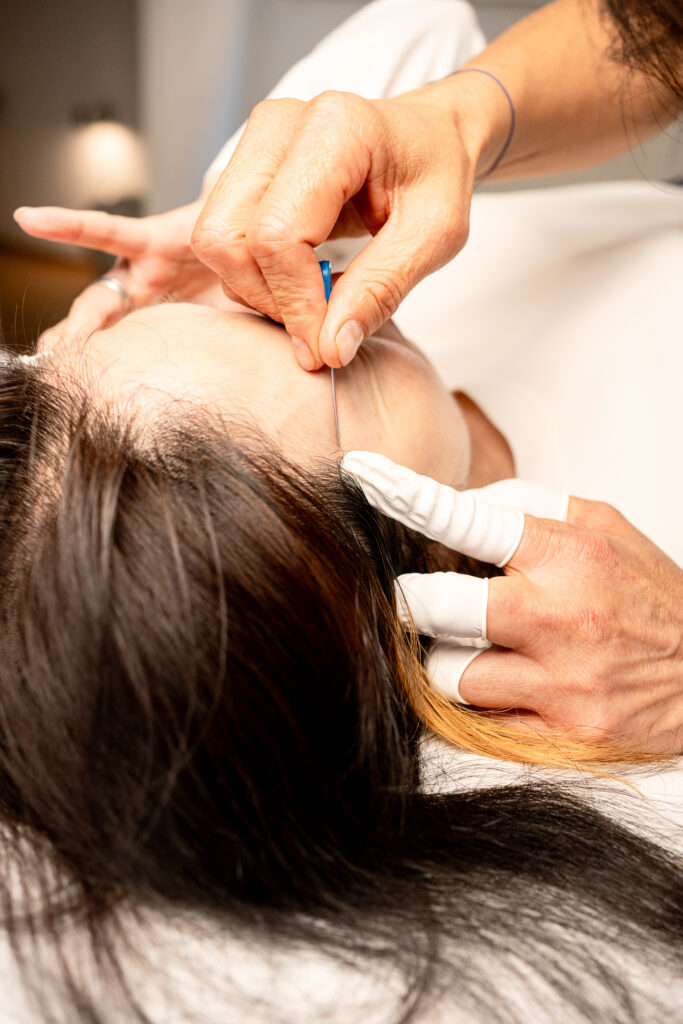Acupuncture is a central treatment method in TCM. The targeted placement of fine needles at defined points regulates the flow of energy (Qi) in the body, releases blockages and stimulates the body’s own healing processes. It is used for a variety of functional and chronic complaints.
A proven method of traditional Chinese medicine
Acupuncture is a central component of Traditional Chinese Medicine (TCM) and has been used for over 2000 years to promote the body’s inner balance. The method is based on the idea that our vital energy – known as Qi – flows through the body in a network of meridians. If this energy flow is out of balance, it can lead to discomfort, pain or functional disorders.
Very fine, sterile needles are used to stimulate specific acupuncture points in order to release blockages and harmonize the flow of vital energy. The aim is to stimulate the body’s self-regulation – without any medication, in a natural way.
Naturally. Holistic. Individually.
In contrast to Western medicine, which often aims to quickly eliminate symptoms, acupuncture addresses the root of the imbalance. It views the person as a whole – with body, mind and emotions as an interconnected system.
Acupuncture shows its potential as a gentle, profound regulatory therapy, especially for complaints such as sleep disorders, exhaustion, digestive problems or recurring pain. It can have both a calming and activating effect – depending on the constitution and treatment goal.
According to the teachings of TCM, acupuncture ensures that blocked energy – the Qi – can flow freely through the body again. Blockages can be caused by stress, illness or emotional strain, for example. The targeted stimulation of acupuncture points brings the energy flow back into balance and supports the body’s own regulation.
Scientific studies also confirm the positive effects of acupuncture – especially for functional complaints such as pain, sleep problems or stress-related symptoms. The proven mechanisms of action include
The particular strength of acupuncture lies in combining traditional empirical medicine and modern knowledge in a holistic treatment – individually adapted and with few side effects.
The World Health Organization (WHO) is a specialized agency of the United Nations based in Geneva. In principle, it is a supranational authority.
Bronchopulmonary diseases:
Cardiovascular diseases:
Gynecological clinical pictures:
Neurological diseases:
Gastrointestinal diseases:
Diseases of the musculoskeletal system:
Mental and psychosomatic disorders and addictions:
Urological diseases:
Skin diseases:

We offer the following forms of acupuncture:
The traditional form of acupuncture is based on the meridian system of TCM. It is used to regulate organ systems, relieve pain and stabilize the autonomic nervous system.
This form targets localized muscle hardening (myofascial trigger points). Precise needling releases tension and effectively reduces pain in the musculoskeletal system. >> Read more
In this specialized technique, needles are placed in the cervical stellate ganglion area to influence the autonomic nervous system. It is used in particular for chronic pain syndromes, migraines, tinnitus, Parkinson’s disease, dementia, restless legs syndrome and circulatory disorders. >> Read more
Mon closed
Tue – Fri 10 am – 6 pm